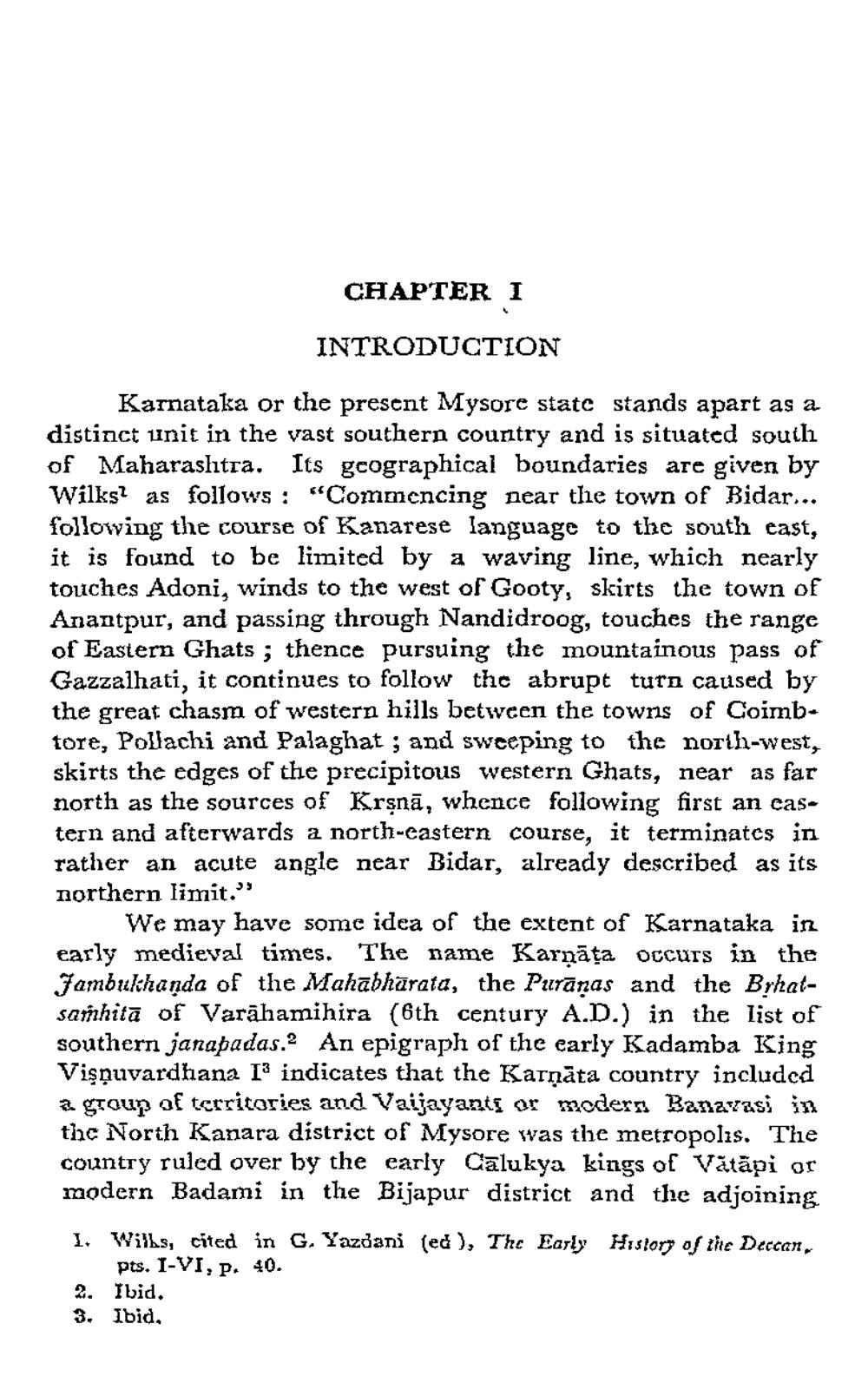________________
CHAPTER I
INTRODUCTION
Karnataka or the present Mysore state stands apart as a distinct unit in the vast southern country and is situated south of Maharashtra. Its geographical boundaries are given by Wilks? as follows : "Commencing near the town of Bidar... following the course of Kanarese language to the south east, it is found to be limited by a waving line, which nearly touches Adoni, winds to the west of Gooty, skirts the town of Anantpur, and passing through Nandidroog, touches the range of Eastern Ghats ; thence pursuing the mountainous pass of Gazzalhati, it continues to follow thc abrupt turn caused by the great chasm of western hills between the towns of Coimb. tore, Pollachi and Palaghat; and sweeping to the north-west, skirts the edges of the precipitous western Ghats, near as far north as the sources of Krşnā, whence following first an castern and afterwards a north-eastern course, it terminates in rather an acute angle near Bidar, already described as its northern limit."
We may have some idea of the extent of Karnataka in early medieval times. The name Karnāta occurs in the Jambukhanda of the Mahabharata, the Puranas and the Brhatsanhita of Varāhamihira (6th century A.D.) in the list of southern janapadas. An epigraph of the early Kadamba King Vişnuvardhana I' indicates that the Karnāta country included a group of territories and Vaijayanti or modern Banayasi in the North Kanara district of Mysore was the metropolis. Tlie country ruled over by the early Calukya kings of Vatãpi or modern Badami in the Bijapur district and the adjoining 1. Wills, cited in G. Yazdani (ed), The Early History of the Deccan,
pts. I-VI, p. 40. 2. Ibid. 3. Ibid,




